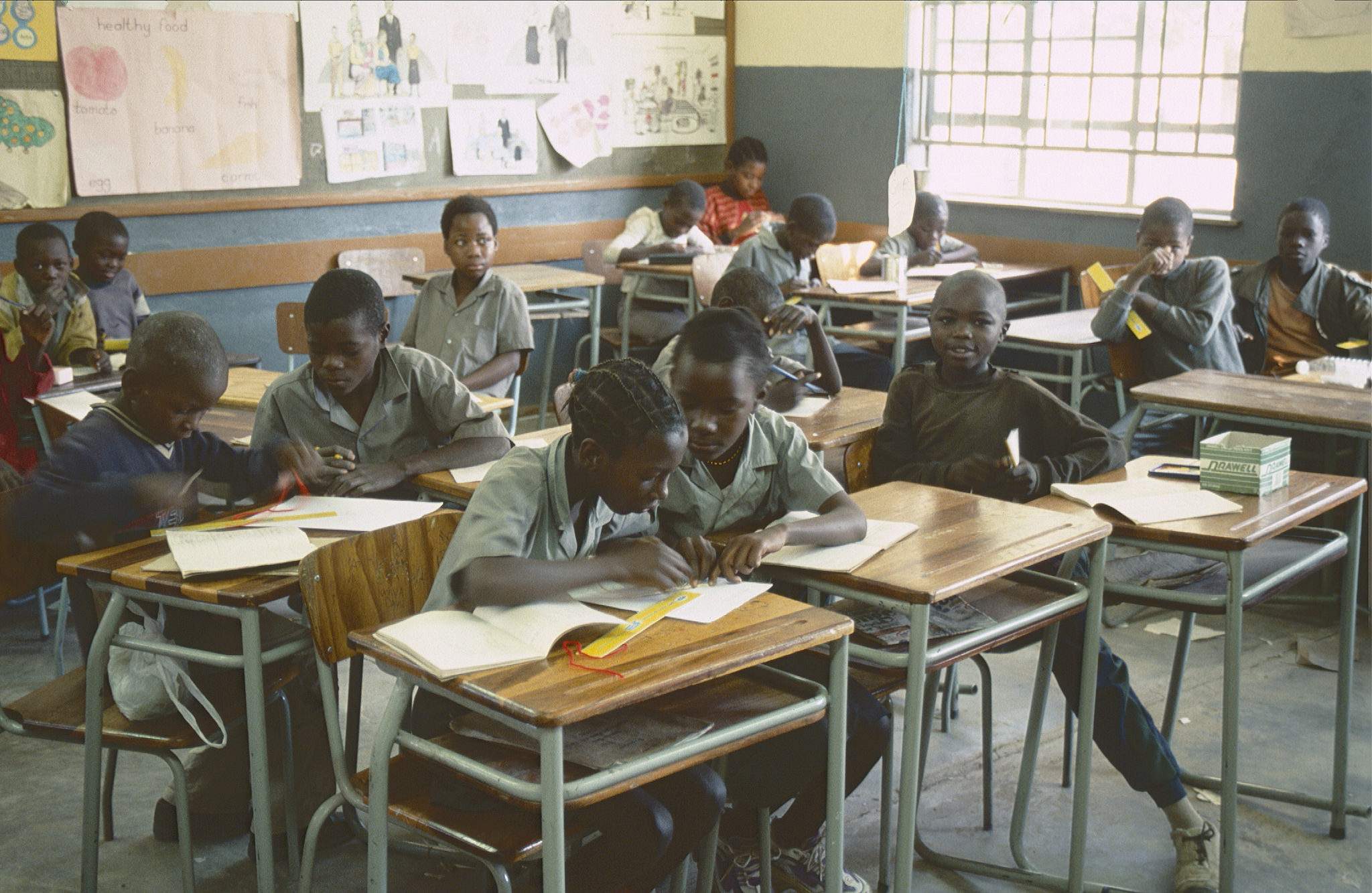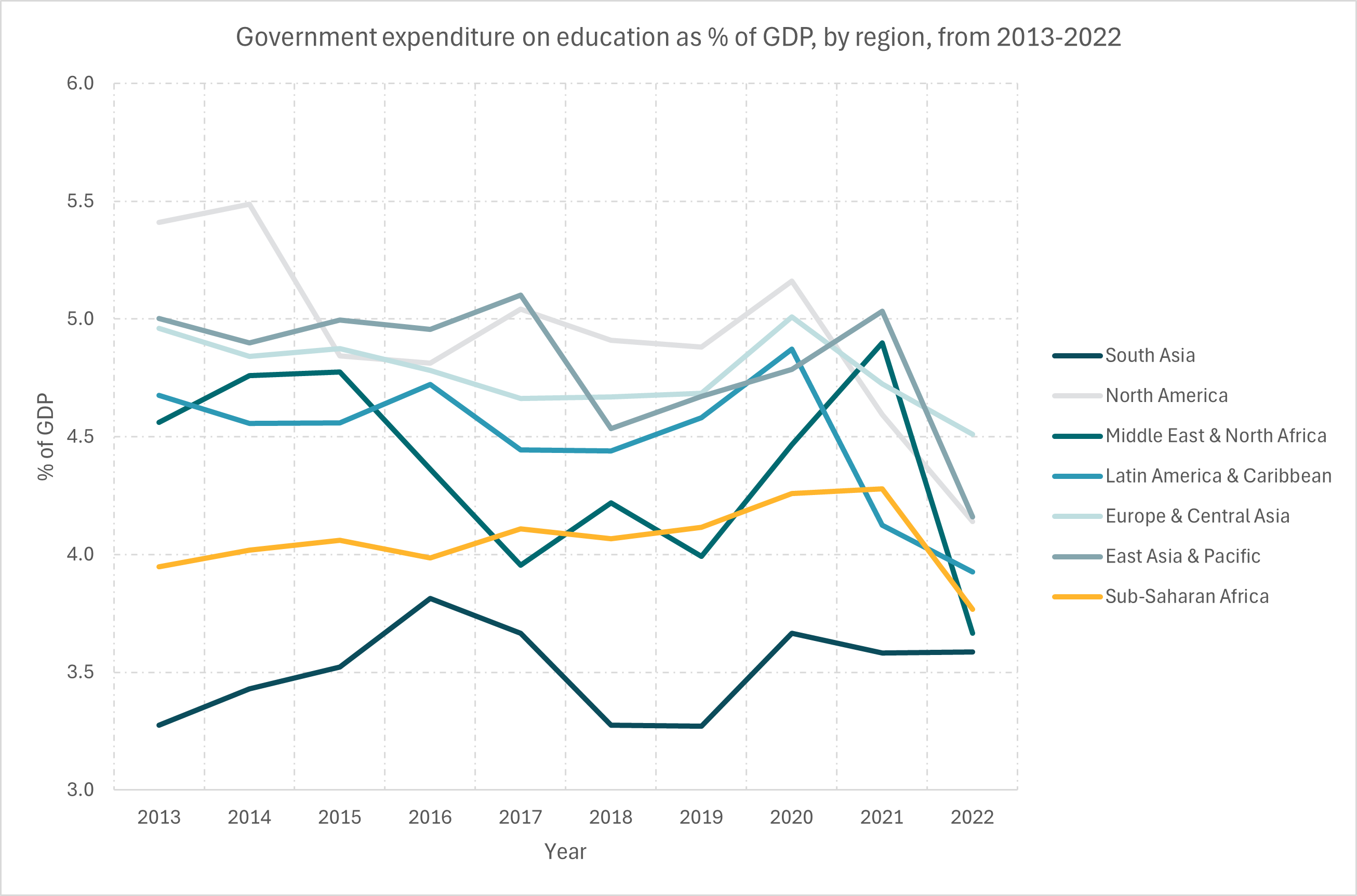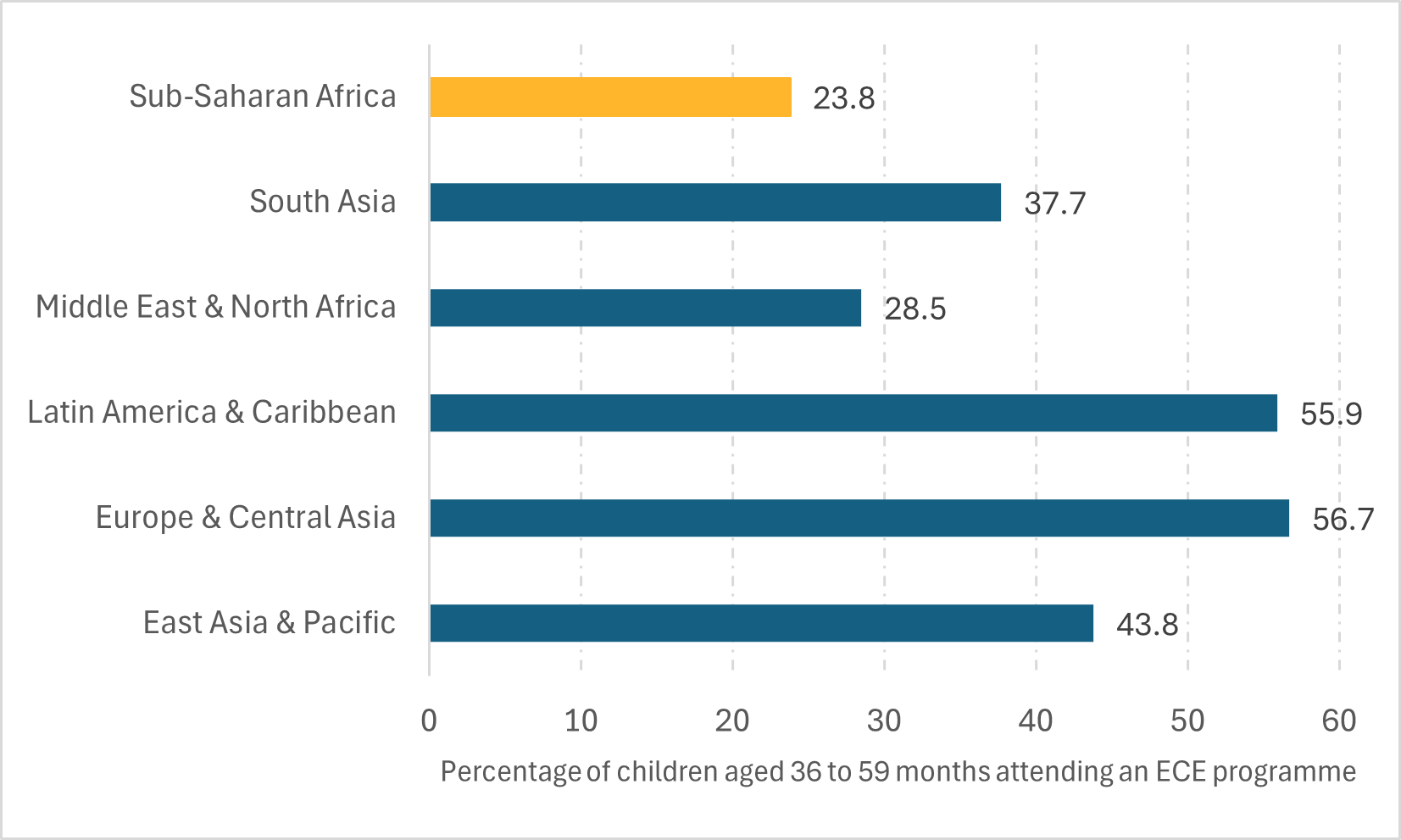Recommended
As African heads of state and government meet for the 37th African Union Summit to discuss “educating and skilling an Africa fit for the 21st century,” they face stark choices forced by a stormy economic environment juxtaposed with urgent educational needs. Although the current climate might require tradeoffs, it is time to be bold in pushing for inclusive and long-term human capital investment.
From the COVID-19 pandemic to the resurgence of conflicts, recent events are a sobering reminder that progress made in promoting education in Africa cannot be taken for granted. The fragile gains in expanding access to primary education over the past few decades remain vulnerable to a fast-growing school-age population and future disruptions due to climate emergencies. Two of the most worrying indicators are the dismal learning outcomes in early grades and the increasing number of out-of-school children. The sub-Saharan Africa region is home to the highest proportion of 10-year-olds, close to 90 percent, who cannot read a simple text for meaning. Similarly, the region does not only feature the highest number of out-of-school children, standing at 98 million, but it is also the only region where this population is growing.
Don’t let a good crisis go to waste; rationalize education spending now
As many countries in the region battle macroeconomic headwinds in the midst of a turbulent international economic environment, the share of government spending on education has declined sharply (Figure 1). On average, for sub-Saharan African countries, government spending on education as a percentage of GDP is below 3.8 percent, lower than it has been since 2013. Interest payments on existing debt are already crowding out public investment in social and economic sectors while efforts to achieve macroeconomic stability in the near future could also risk further cuts to education spending.
Figure 1. Government spending on education has declined globally
The most immediate priority for African governments should be to shore up education spending through political negotiations and administrative mechanisms. But this may also be the time to give long-standing issues in education financing in Africa serious consideration. These include:
Efficiency
As of 2018, Africa was the least efficient region in terms of government education spending. The average efficiency score for primary school was 58 percent, and for secondary school, it was 41 percent. While the continent's current per capita spending on education remains remarkably low, justifying the need for an overall increase in total expenditure, there is significant potential for improvement through enhancing spending efficiency.
Transparency
It is hard to ensure spending efficiency without sufficient transparency. Education budget transparency is even more important now due to the high stakes of allocation decisions in the face of shrinking fiscal spaces. In a pilot study conducted in 2019, only a third of 28 countries (globally) were shown to be supplying budget data disaggregated into allocations for primary, secondary, and tertiary education. Even fewer countries publish disaggregated ex-post data on actual education spending. As part of the effort to preserve education spending, African governments should commit to publishing regular and disaggregated data on actual spending.
Intersectoral coordination
Education is only one piece of a broader human capital development agenda for most countries. As such, there are significant complementarities between investments in conventional educational inputs and other social services such as nutrition, health, and social protection. For instance in school nutrition, our research shows that cross-sectoral coordination can make spending more efficient. There is no more opportune moment than the current period of pronounced strain on public finances to optimize the financing and budgeting framework for comprehensive human capital development in Africa, transcending traditional sectoral silos.
Improving the targeting and harmonization of international aid for education
Aid to education has stagnated in recent years. While donors should be encouraged to increase their commitment of official development assistance for education for African countries, they should also rethink the targeting and coordination of current aid flows. Generally, the vast majority of education spending is financed domestically, with donor funding constituting only a small slice even in low-income African countries. Therefore, donor funds would be best spent if they could catalyze more investment in effective programmes and help make the domestically funded portions of the expenditure more efficient. Countries also typically deal with a crowded field of donors financing education; in Kenya, for instance, 41 unique donors supported education from 2019-2021. In the face of stagnating aid, it might help to coordinate and harmonize overall aid flows to improve efficiency.
Don’t let the short-term crowd out the long-term. Invest where it counts
As governments around the African continent work through the ongoing economic challenges, they should consider which investments in education would have the maximum cumulative and economy-wide effect to help stave off the next cycle of debt crisis. Improving access to schools should continue to be a priority for African governments given the rising number of out-of-school children and emerging challenges threatening to push more children out.
Expanding free schooling is a proven intervention that improves school access leading to better economic outcomes in the long term, as long as it is backed by deliberate policies and investment. Gains in enrollment resulting from abolishing fees are only realised when complementary interventions are implemented, such as building new schools in underserved areas, and compensating schools for lost fee income. This would expand access to schooling for students from all socioeconomic backgrounds, especially enabling the poorest to increase educational attainment. And while free schooling is expensive, returns on the investment are possible through higher earnings in the long term.
Although there are likely to be several alternative interventions to improve educational outcomes in the near to medium term, there is little that beats early childhood interventions when it comes to the long term. There is sound evidence that early childhood interventions, because of their multifaceted social benefits, are significantly cost-effective especially when long-run economic sustainability is under threat. Afterall, one of the most effective levers linking current policy to the “long run” is investment in the youngest children.
Currently, fewer than 24 percent of children aged 36 to 59 months attend some form of early childhood education in sub-Saharan Africa, making the region the least served part of the world (Fig 2). The corresponding number for Latin America and the Caribbean is closer to 60 percent. While some of this difference could be attributed to the economic status of countries in the two regions, policy choices are likely to play a role. The younger the children, the more essential it is to adopt a multisectoral approach for promoting their human capital development. In this context, it is crucial to overcome sectoral silos that artificially compartmentalize the multifaceted benefits of early childhood interventions and establish an appropriate time horizon for effective planning.
Figure 2. Sub-Saharan Africa has the lowest share of children attending early childhood education
Don’t forget the human impact of macroeconomic turbulence. Keep schools free from hunger
Economic shocks result in greater vulnerability for households, especially those that are already in poverty. This impacts children, directly and indirectly. At any given time, there can be multiple trendy and supposedly cost-effective solutions aimed at raising test scores competing for a slice of the education budget. But no amount of innovation would enable a hungry child to learn, let alone thrive.
Amid chronic poverty and interlinked vulnerabilities, compounded by ongoing macroeconomic uncertainty, African governments cannot expect to improve educational outcomes without addressing the ever-present problem of school hunger. Apart from it being a child rights issue, there is ample evidence showing that school feeding is an effective strategy to improve learning outcomes by staving off short-term hunger. As a major systematic review spanning several education interventions has shown, for sub-Saharan African countries, school feeding is surpassed only by structured pedagogy and extra time in terms of its impact on learning outcomes (Fig 3).
Figure 3: School feeding is shown to be more effective to improve learning outcomes in sub-Saharan Africa countries than in other low- and middle-income countries

Source: Bahir et al. 2018 "Facing Forward: Schooling for Learning in Africa", constructed based on data from Snisveit et al. 2015.
Note: The bars represent effect size shown in units of standard deviation. “Extra time” refers to added learning time through an extended school day or year. “Multilevel” refers to interventions that target all levels: students, teachers, schools, and parents. “Structured pedagogy” is a package of teacher training, ongoing pedagogical support, and instructional materials.
Be prudent, but bold
The AU summit offers a good opportunity for African governments to reflect on the region’s track records in education and to deliberate on potential solutions to some of the toughest challenges in educating the continent’s next generations. Although this comes at a time when many countries are facing a myriad of competing priorities with limited means, there is no better way to secure the future than to start investing in the education and wellbeing of the very citizens who will be in charge of it as early as possible.
Disclaimer
CGD blog posts reflect the views of the authors, drawing on prior research and experience in their areas of expertise. CGD is a nonpartisan, independent organization and does not take institutional positions.









